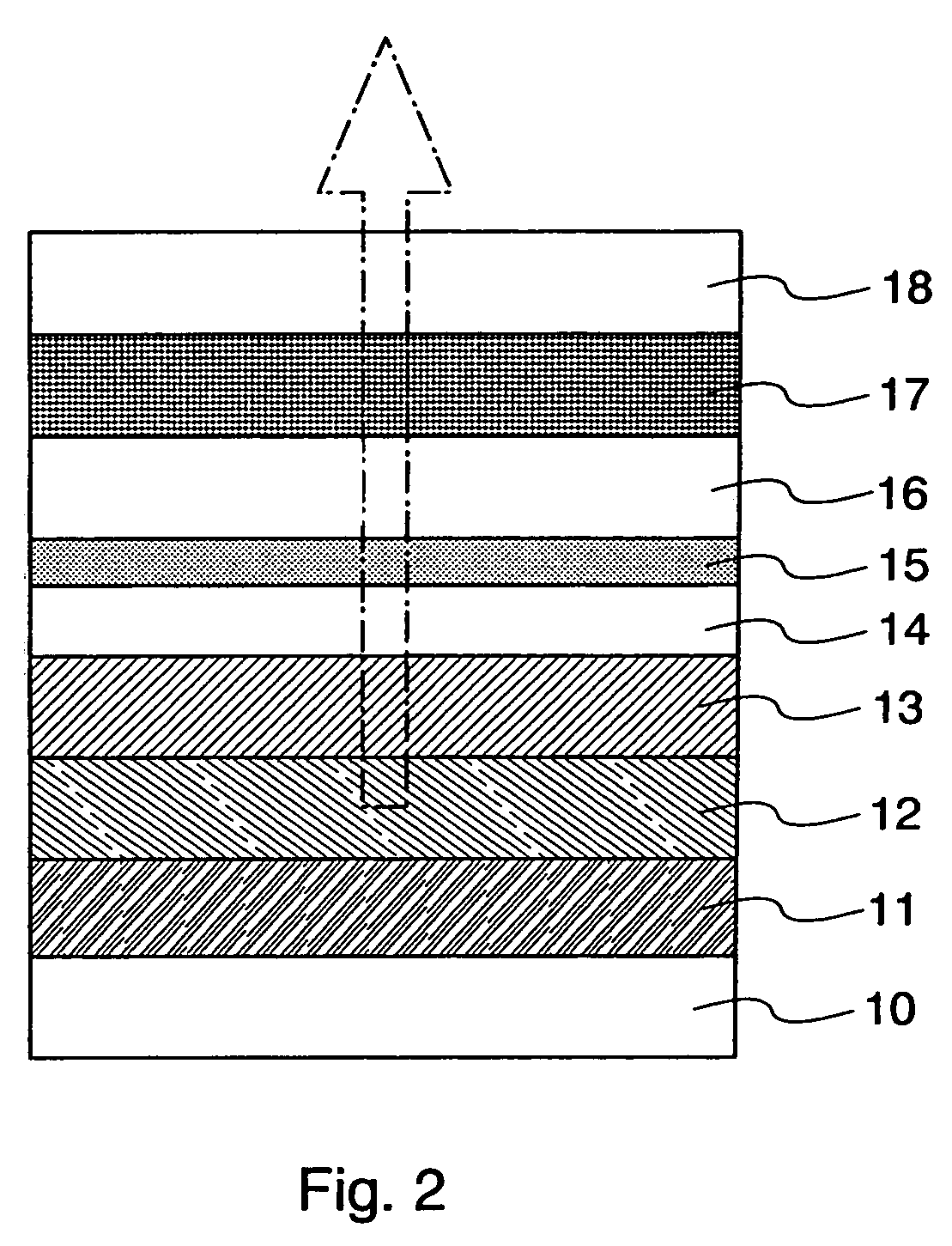Light-emitting element and display device
a technology of light-emitting elements and display devices, which is applied in static indicating devices, instruments, non-linear optics, etc., can solve the problems of deterioration of light extraction efficiency, mainly affecting the light extraction efficiency, so as to achieve high light extraction efficiency and high reliability
- Summary
- Abstract
- Description
- Claims
- Application Information
AI Technical Summary
Benefits of technology
Problems solved by technology
Method used
Image
Examples
embodiment 1
[0046]A structure of a light-emitting element according to this embodiment is explained with reference to FIG. 1A. FIG. 1A illustrates a schematic cross-sectional view of the light-emitting element according to this embodiment. The light-emitting element according to this embodiment comprises a pixel electrode 11, an electroluminescent layer 12, a transparent electrode 13, a passivation film 14, a stress relieving layer 15, and a low refractive index layer 16 as illustrated in FIG. 1A. The light-emitting element is generally provided over a substrate 10. The light-emitting element according to this embodiment is capable of emitting light to the top (so-called top emission), which comprises the passivation film 14 formed over the transparent electrode 13, the stress relieving layer 15 formed over the passivation film 14, and the low refractive index layer 16 formed over the stress relieving layer 15. The present invention can be applied to a top emission light-emitting element and a ...
embodiment 2
[0074]A structure of a light-emitting element according to this embodiment is explained with reference to FIG 1B. FIG. 1B is a schematic cross-sectional view of the light-emitting element according to this embodiment. The characteristic feature of the present invention relating to this embodiment is a passivation film 14 having a lamination layer structure. The structure illustrated in FIG 1B has a three-layer structure formed by stacking sequentially a silicon nitride film 14a, a silicon oxide film 14b, and a silicon nitride film 14c. The second layer, SiO2 film, combines a function as a passivation film and a function of preventing peeling or cracking of a SiN film (function as a stress relieving film). By forming the passivation film to have a three-layer structure, a barrier property of the passivation film is improved and penetration of impurities such as moisture or oxygen into a transparent electrode 13 or an electroluminescent layer 12 can be effectively prevented.
[0075]A st...
embodiment 3
[0079]A structure of a light-emitting element according to this embodiment is explained with reference to FIG. 2. FIG. 2 is a schematic cross-sectional view of the light-emitting element according to this embodiment. The characteristic feature of the present invention relating to this embodiment is that space between a low refractive index layer 16 and an opposite substrate 18 is filled with a filling layer 17. The filling layer 17 has preferably a refractive index that is almost the same as those of a low refractive index layer 16 and an opposite substrate 18 or that is intermediate between those of the low refractive index layer 16 and the opposite substrate 18. In the case that the low refractive index layer 16 is made from LiF (n=1.30 to 1.39) and the opposite substrate 18 is formed by a glass substrate (n=1.5), a material having a refractive index of approximately 1.2 to 1.6 is preferably used as the filling layer 17. For instance, Fluorinert that is inert liquid containing flu...
PUM
 Login to View More
Login to View More Abstract
Description
Claims
Application Information
 Login to View More
Login to View More - R&D
- Intellectual Property
- Life Sciences
- Materials
- Tech Scout
- Unparalleled Data Quality
- Higher Quality Content
- 60% Fewer Hallucinations
Browse by: Latest US Patents, China's latest patents, Technical Efficacy Thesaurus, Application Domain, Technology Topic, Popular Technical Reports.
© 2025 PatSnap. All rights reserved.Legal|Privacy policy|Modern Slavery Act Transparency Statement|Sitemap|About US| Contact US: help@patsnap.com



